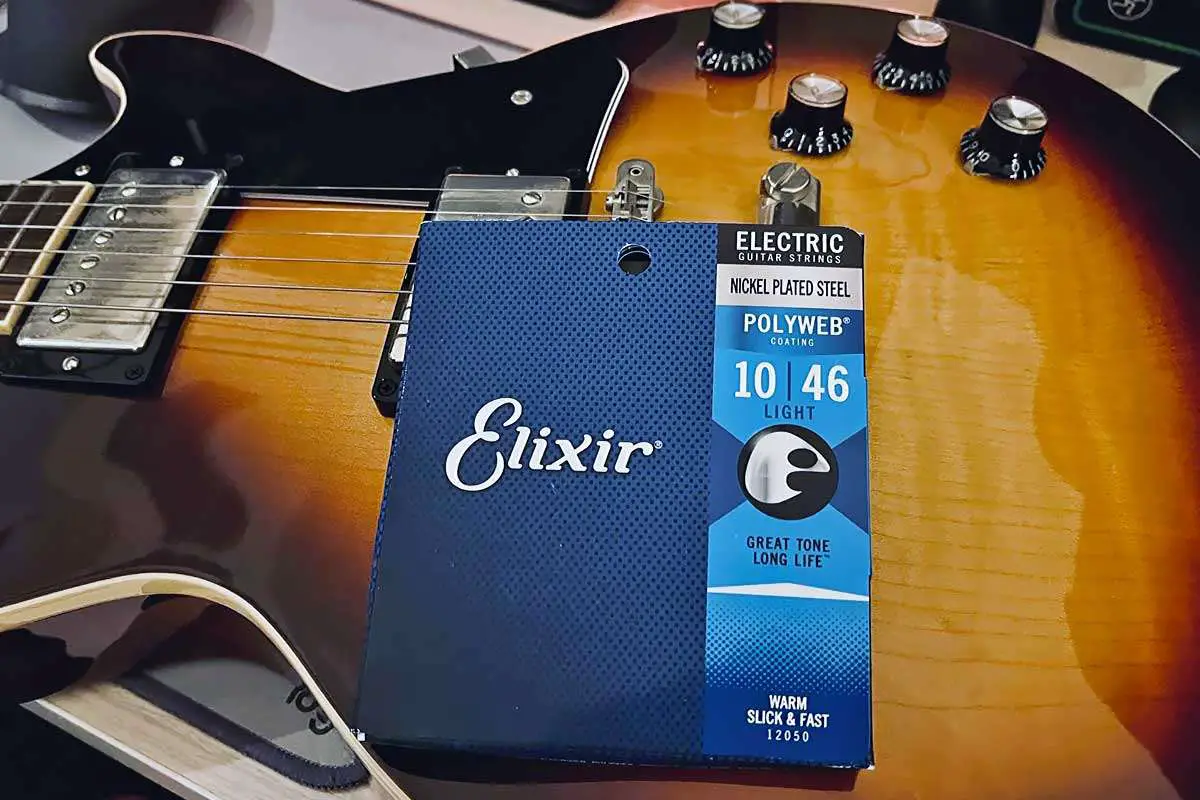Understanding the different guitar string types is fundamental to finding the sound & feel that best complements your playing style & is compatible with your instrument. Guitar strings play a pivotal role in shaping the tone and playability of your guitar. The core materials, gauges, and winding methods used in the creation of guitar strings can dramatically alter the music produced. Nylon strings, often used in classical and flamenco guitars, provide a softer, mellower sound, whereas steel strings, common on acoustic and electric guitars, offer a brighter and more resonant tone.
When you’re considering types of guitar strings, it’s important to note that steel strings are further divided into categories like roundwound or flatwound, each with their own unique tonal qualities. Additionally, the gauge, or thickness of the strings, affects both sound and playability. Lighter gauge strings are typically easier to press down and bend, making them well-suited for beginners or those interested in genres that require a lot of string bending, like blues. Heavier gauges, on the other hand, provide more volume and sustain, favored in rock and heavy metal music.
Over the years, innovations in materials have led to the development of strings that cater to a variety of preferences, from coated strings that prolong lifespan to hybrid sets that mix and match gauges for balanced playability. Choose your strings wisely, as they are crucial to the voice of your guitar, enhancing your musical expression. Whether you’re strumming folk music, crafting intricate classical pieces, or shredding through a rock solo, the strings you choose will be your close collaborators in the creation of your musical journey.

Guitar String Types & Materials
When you select guitar strings, the material they are made from greatly influences their sound and playability. Each type of guitar—acoustic, electric, and classical—has strings optimized for its unique requirements.
Acoustic Guitar Strings
Acoustic guitar strings, distinct in their construction, are designed to be compatible with the build and sound projection of acoustic guitars, which is different from their electric and classical counterparts.
Unlike electric guitars that use magnetic pickups to sense string vibrations, acoustic guitars rely on the physical resonance of the strings to amplify sound through the guitar body. Therefore, the metal strings on an acoustic guitar, often bronze or steel, are essential in producing the bright and resonant tones characteristic of the instrument.
In comparison, classical guitars typically use nylon strings that result in a softer, more mellow tone, which is not interchangeable with the steel strings of an acoustic due to differences in tension and construction.
Acoustic strings come in various gauges and compositions, each offering unique tonal qualities; phosphor bronze strings deliver a warm sound, while 80/20 bronze strings provide a sharper, more pronounced ring.
Silk and steel strings, a hybrid, offer a compromise with a softer touch and a more subdued tone, making them particularly attractive for fingerstyle play. This variety allows guitarists to select strings that best suit their playing style and sound preference, ensuring that the acoustic guitar can cater to a wide range of musical genres and techniques.

Related: Acoustic & Electric String Gauge Chart
Classical Guitar Strings
Classical guitar strings are specifically crafted to enhance the traditional nylon-stringed instrument’s sound, which is markedly different from that of steel-stringed acoustic or electric guitars.
The nylon or gut treble strings of a classical guitar produce a softness in touch and a warmth in tone that is highly prized for classical and fingerstyle music, providing a contrast to the bright and resonant tones produced by the metal strings of an acoustic guitar.
The acoustic’s bronze strings are designed to vibrate freely and resonate with the guitar’s wooden body, thus creating a sound that can project in an open space or alongside other instruments. Electric guitar strings, typically made from steel or nickel, are chosen for their magnetic properties, which interact with the electric guitar’s pickups to convert string vibrations into electrical signals, resulting in the electric guitar’s distinctive amplified sound.
In comparison, the bass strings of a classical guitar set, often wrapped with silver or another metal, are meant to complement the nylon trebles by enriching the lower end with depth and sustain. Moreover, some classical guitarists may choose carbon fiber strings for their ability to offer a brighter tone and stronger projection, which can be advantageous for more modern pieces or vigorous styles like flamenco. Each type of string serves a specific purpose and caters to the unique construction of the guitar it is meant for, thereby influencing the instrument’s overall sound and playability.

Electric Guitar Strings
Electric guitar strings are engineered to complement the design and function of electric guitars, which fundamentally differ from their acoustic and classical counterparts.
The use of metallic strings is crucial for electric guitars because they need to interact with magnetic pickups to produce sound. This interaction is less about the acoustic properties of the string itself and more about the string’s ability to generate a magnetic field disturbance that the pickups can translate into an electrical signal.
In contrast, acoustic guitar strings, often made from bronze, are crafted to resonate with the guitar’s body to naturally amplify sound, and classical guitar strings, typically nylon, are designed to produce a warm, rich tone when played with the fingers.
Electric guitar strings, such as those made from pure nickel, provide a smoother and warmer tone, reminiscent of vintage sounds, whereas nickel-plated steel strings offer a brighter and more present tone, favorable in modern music settings where they need to stand out amidst other instruments.
Additionally, the construction of the string’s core, whether hex-shaped or round, further defines the string’s playability and tonal characteristics, with hex cores generally providing more bite and durability, and round cores offering more flexibility and a slinkier feel. The choice of electric guitar strings, therefore, is a balance of material and construction, each contributing to the instrument’s feel and the guitarist’s desired sound.
Additional Materials & Coatings
Guitar strings can also be coated to serve as a barrier against the elements and the wear of regular play. The primary purpose of these coatings is to shield the strings from the corrosive effects of moisture, oils, and acids that naturally emanate from a player’s fingers, thereby extending the strings’ functional lifespan.
While these coated strings may indeed change the tactile experience for the guitarist, offering a different feel under the fingertips, they also tend to yield a tone that is somewhat less bright compared to their uncoated counterparts. This trade-off is often considered worthwhile for players who prioritize durability and reduced maintenance over the raw brightness of sound.
Furthermore, the smoothness of coated strings can be beneficial in minimizing the incidental noise produced by the movement of fingers along the strings, commonly referred to as finger squeaks. This characteristic is particularly appreciated in recording scenarios or by players who prefer a cleaner sound when shifting positions on the fretboard.
Coated strings, therefore, represent a practical innovation in string technology, providing an option for those who value the longevity and consistent performance of their strings, even if it means a subtle modification of their instrument’s acoustic properties.

Brand and Quality Considerations
When it comes to guitar strings, the brands you choose and the quality of the strings have a direct impact on your instrument’s sound and playability. It’s crucial to understand how these factors contribute to your guitar’s tone, volume, and overall performance.
Popular Guitar String Brands
The market offers a variety of brands that are renowned for their quality and distinct characteristics. Elixir is celebrated for their coated strings which enhance longevity, whereas D’Addario boasts precise tuning stability. Martin strings are often the go-to for a warm, mellow acoustic tone, and Ernie Ball is synonymous with vibrant, crisp electric guitar strings.
Related:
The Best Acoustic Guitar Strings For Beginners
The Best Electric Guitar Strings For Beginners
Characteristics of High-Quality Strings
High-quality strings offer:
- Tone clarity: Whether you’re looking for a bright and rounded tone or a deeper, mellow sound.
- String longevity: Coated strings are resistant to rust and corrosion, increasing their lifespan.
- Feel: Smooth and comfortable under the fingers, reducing fatigue.
- Tuning stability: Staying in tune through temperature changes and extended play.
- Volume: Capable of producing loud and full-bodied sounds without excess effort.
Brand Selection Based on Musical Preference
Different genres demand specific string attributes:
- Acoustic guitar strings for folk or country should give a warm, rich tone, which brands like Martin provide.
- Electric guitar strings for rock or metal need to deliver bright and heavy sounds, often found with Ernie Ball strings.
- Classical guitar strings should emit a rounded, crisp tonality, often achieved with specific nylon strings by various specialized brands.
Related:
Recommended Strings For Blues
Recommended Strings For Classical
Recommended Strings For Flamenco
Significance of String Change Frequency
Regular string changes are vital for maintaining (How Often To Change Strings):
- Consistent sound quality, preventing dullness.
- Optimal playability, avoiding increased string tension and neck stress.
- Body and wood protection, as aged strings can cause damage due to deteriorating coatings and increased rust buildup.
Care and Maintenance of Guitar Strings
Proper maintenance of your guitar strings is essential for preserving their longevity and ensuring consistent tuning stability. Whether you use coated or uncoated strings, regular care can prevent rust and maintain the string’s feel and performance.
Cleaning and Preserving String Life
To extend the life and maintain the quality of your guitar strings, it’s important to keep them clean. After each playing session, take a moment to wipe down your strings with a clean, dry cloth. This removes oils, sweat, and dirt which can contribute to corrosion and diminished sound quality.
For a more thorough cleaning, using a string cleaner designed for guitar strings can help remove tougher grime. Be gentle and avoid using harsh abrasives, as these can damage the strings.
If you’re looking for longevity, consider investing in coated strings. These have a thin layer of protective material which can shield the metal from moisture and dirt, thereby preventing rust and offering a consistent feel.
It’s worth noting that the string gauge, or thickness, also plays a role in maintenance. Heavier gauges are often more robust but might require more force when cleaning. Regardless of gauge, ensure that your cleaning is gentle to avoid unintentionally affecting the tuning stability.
Maintaining your guitar includes not only the strings but also checking the hardware that holds them in place. Ensuring that the tuning pegs and bridge are clean and free of rust can help maintain a stable tuning.
